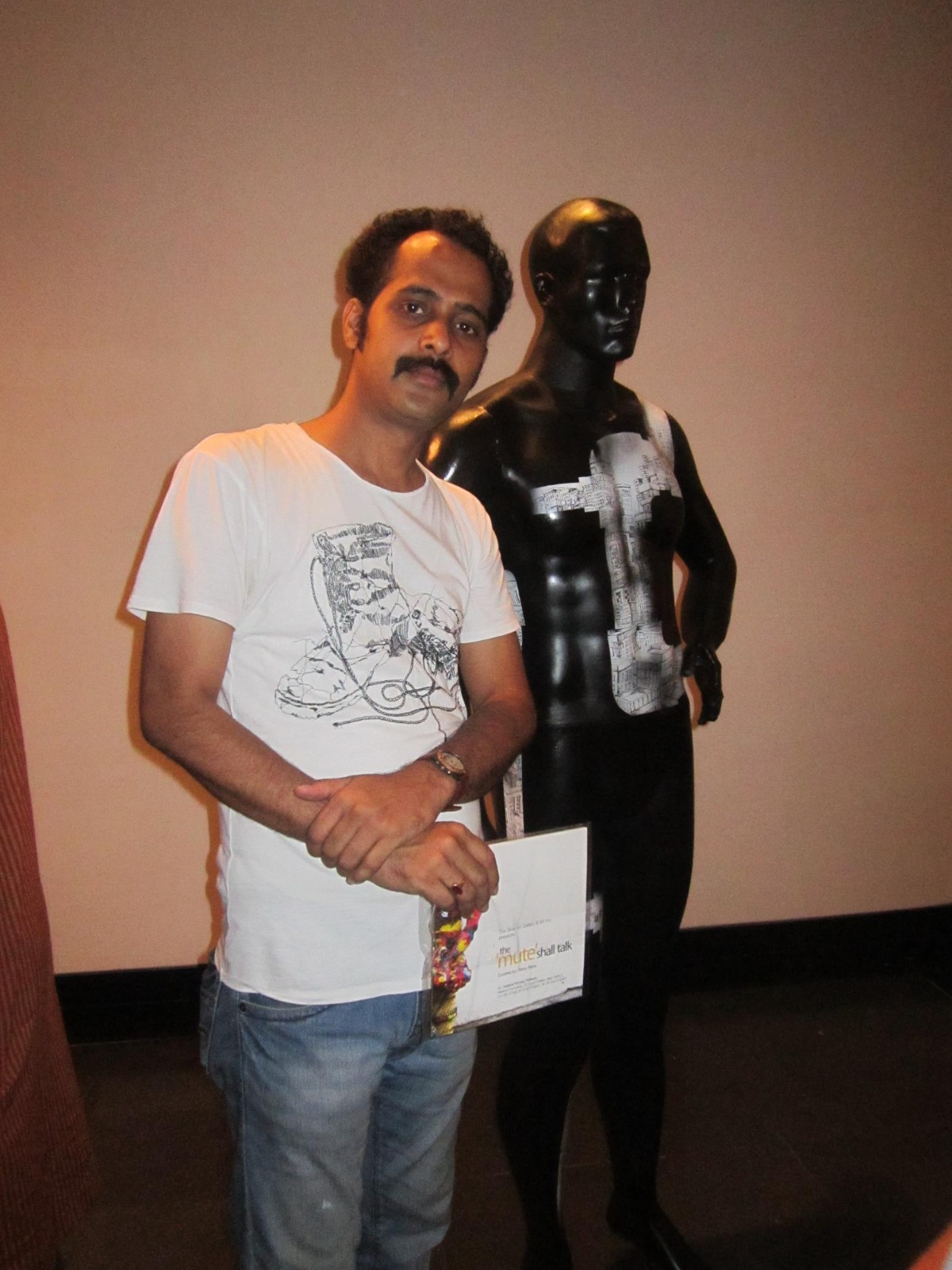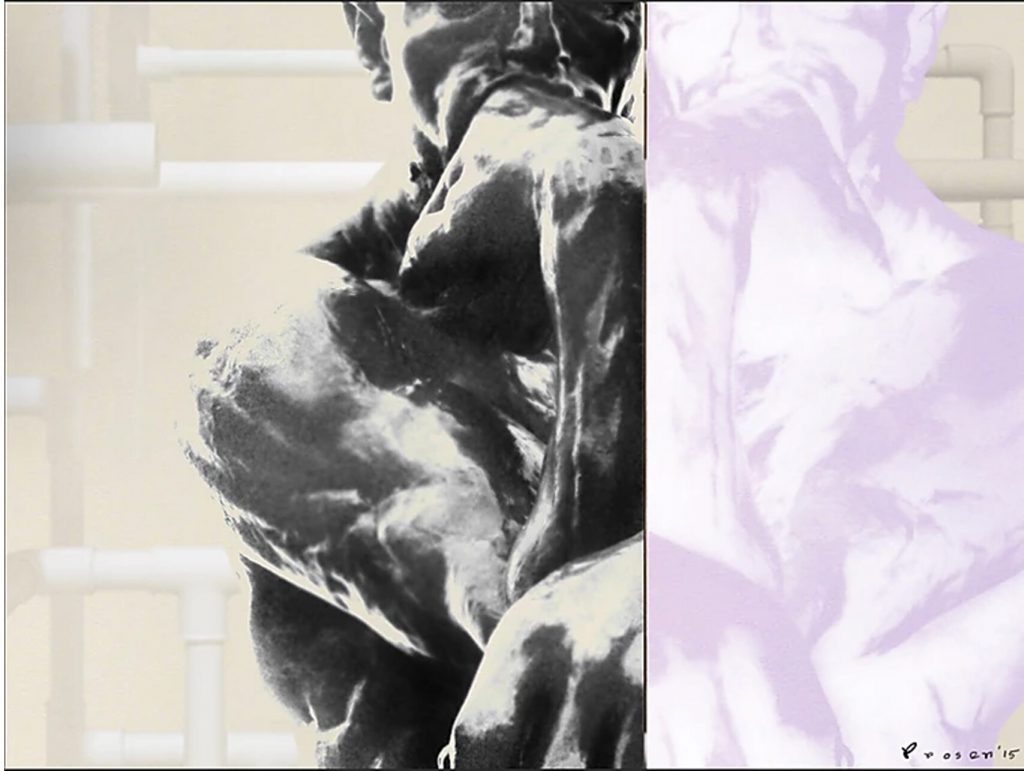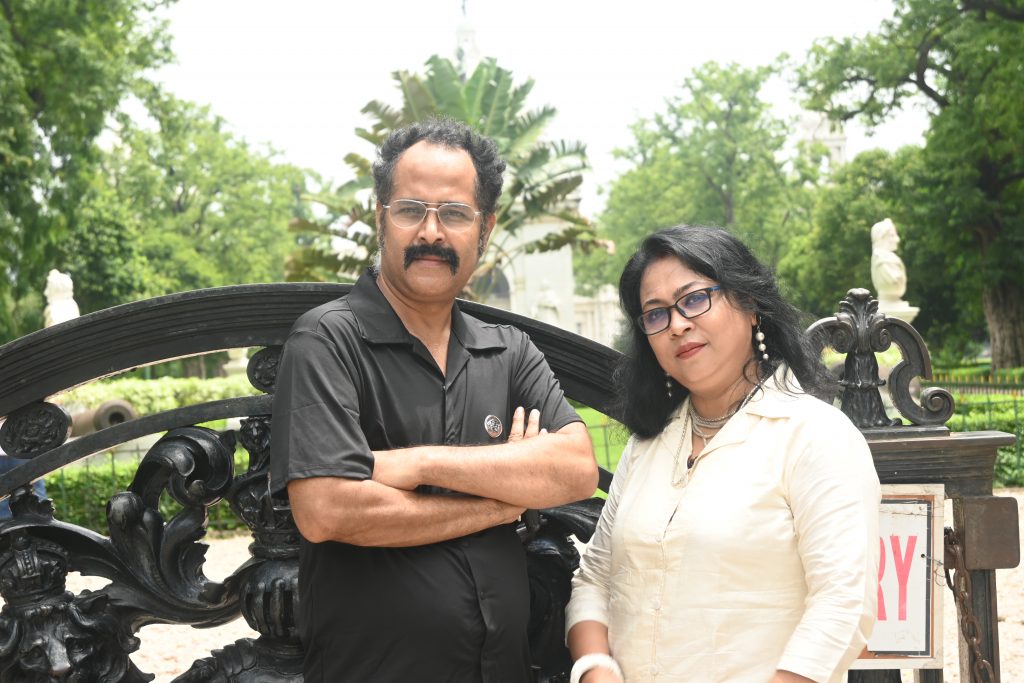Your painting ‘Thinker’ delves into philosophy and social perception—what triggered this theme in your artistic journey?
We continually draw inspiration from great artists and philosophers to deepen our understanding and enrich our lives. In my art practice, I explore both the positive and negative impacts on humanity. As part of this process, I strive to incorporate meaningful objects from everyday life—objects that connect directly to our childhood, evoking memory, emotion and reflection.
From childhood, we are taught by our elders to follow what is good and avoid what is harmful. This foundational practice shapes our moral compass. In my art, I reflect on these early lessons by incorporating symbolic objects from childhood, inviting viewers to reconnect with the innocence, choices and values that shaped who we are today.
Building on this thought process, I am beginning a new series titled The Thinker. In this series, I incorporate the iconic statue of The Thinker in various forms as a central symbol. By engaging directly with this powerful image, I aim to explore and express my own identity as a thinker—someone who reflects deeply on the human condition, moral values and the impact of both positive and negative forces on our lives.
How has teaching for nearly a decade shaped your artistic expression and creative discipline?
As we know, teaching is a noble profession. It shapes minds, builds character and passes down the values that guide us through life. Much like teaching, my art aims to provoke thought, spark reflection and inspire a deeper understanding of ourselves and the world around us.
Throughout my teaching journey, I’ve come to realize that students are always in search of a motivating figure—someone who not only imparts knowledge but also inspires, encourages and believes in their potential. I have always made it a point to share not only my skills but also my thought process with students. I believe that when students understand how I approach problems, make decisions and learn from mistakes, they gain the confidence and tools to develop their own independent thinking.

You often use mirror images and pipes in your work. What deeper symbolism do these elements hold for you?
A mirror has always both complemented and corrected us—it reflects who we are. In the early stage of my life, I found a passion for photography. It helped me develop a keen eye for detail, patience and the ability to see beauty and meaning in everyday moments.
We used an analogue camera to capture moments. Unlike today’s instant previews, we had to wait for the film roll to be developed before we could see the results. That’s a great memory, and it reflects a thoughtful process—waiting, anticipating and appreciating the outcome. At that time, we used a lightbox to view the negatives before producing the final positive image. Through this process, I realized that every person had the ability to observe the ‘negative’ and interpret it in a way that reveals something positive. It taught me that understanding and perspective are key to transformation.
In this way, I started using the mirror image of my paintings not just as an artistic technique but as a way to reflect on different perspectives. Just as a mirror reveals what we often overlook, this practice helped me see my work and thoughts from a new angle. As I continued my journey in art, I explored a wide range of objects such as pipes, animals and everyday materials—to bring new dimensions to my work. Each object became a symbol, allowing me to communicate complex emotions and perspectives.

How do mythology and meditation influence your creative process and choice of subjects?
We grew up listening to Indian folktales and fables told by our grandparents. These stories not only entertained us but also taught us valuable lessons about life, morals and human nature. They deeply influenced my imagination and storytelling abilities, which continue to inspire my art and teaching today.
I naturally developed a deep understanding of life. The wisdom woven into each tale helped shape my values, perspective and the way I connect with others. When it comes to the technical aspects of meditation, I may not fit the typical image of a meditator. However, I often find a meditative state through my creative process, observation and moments of quiet reflection. I see meditation as a practice of balancing our thoughts and deepening our consciousness—bringing clarity, stillness and awareness into everyday life. That’s why I believe every previous thought process lays the foundation for new ideas and creative expressions—it’s through reflection and awareness that innovation begins.
What’s the biggest shift in your style since moving from Kolkata to Delhi?
I am from Kolkata, born and brought up in its rich urban cultural environment. The city’s vibrant artistic heritage, its blend of tradition and modernity and its deep-rooted appreciation for the arts have all played a vital role in shaping my creative identity.
After completing my college education, I moved from Kolkata to Delhi—another of India’s most culturally dynamic cities. The transition was more than just geographical; it marked a turning point in my artistic journey. Delhi welcomed me with its energy, diversity and creative possibilities. It gave me space to grow, to experiment and most importantly, to find my own voice as an artist.
In Delhi, I encountered a different kind of urban reality—gritty, layered and visually striking. Much of the visual language in my paintings emerged from observing the everyday structures and patterns of the city. The pipe structures that frequently appear in my work are more than architectural elements—they are metaphors for connection, pressure, flow and survival. They represent the unseen yet essential systems that keep a city alive, much like the emotional and psychological structures that shape human experience.
Philosophically, my work often reflects a dialogue between the two cities that have defined me: Kolkata and Delhi. While Kolkata gave me a foundation in art and culture—rich with tradition, poetry and introspection—Delhi brought urgency, confrontation and transformation. The tension and harmony between these two worlds form the conceptual backbone of my paintings. In many ways, my art is a personal cartography of reform—a visual map of evolving identity, shaped by the emotional and cultural shifts between these two great cities.

Your art has been exhibited widely—what does global recognition mean to you as an Indian artist rooted in tradition?
Even the most modest exhibitions held abroad have a profound impact on me. There’s something uniquely humbling and enlightening about presenting my work to an international audience—people with different cultural backgrounds, perspectives and emotional responses. Their reactions often reveal new layers within my own art that I hadn’t seen before.
Global recognition, while gratifying, inspires me most because it opens a window into how art transcends language and borders. It reminds me that creativity is a universal language and that my work, when shared beyond familiar surroundings, becomes part of a larger global conversation. Each international experience helps me grow not just as an artist but as a more open and connected individual.


0 Comments